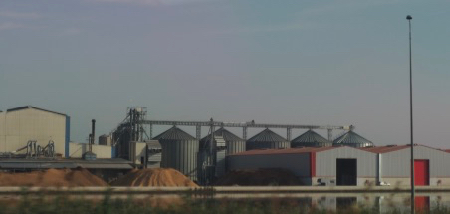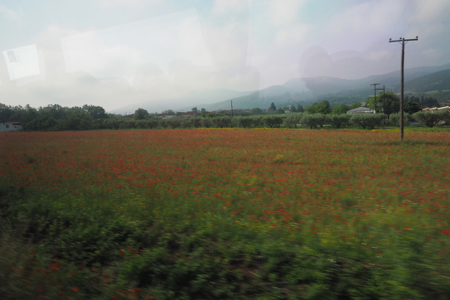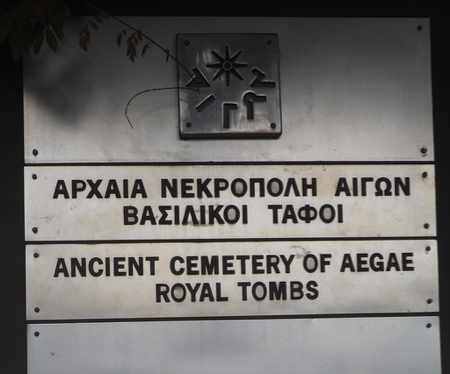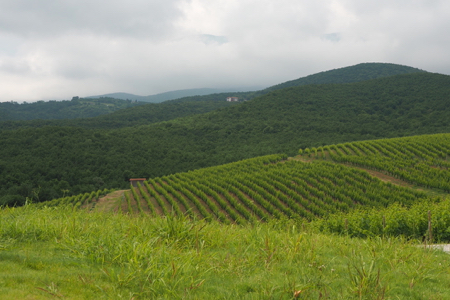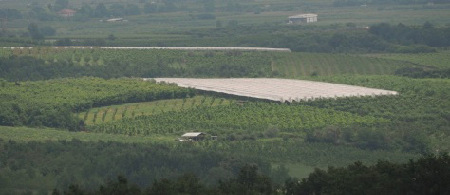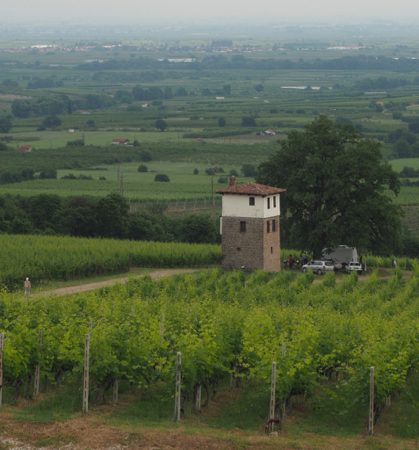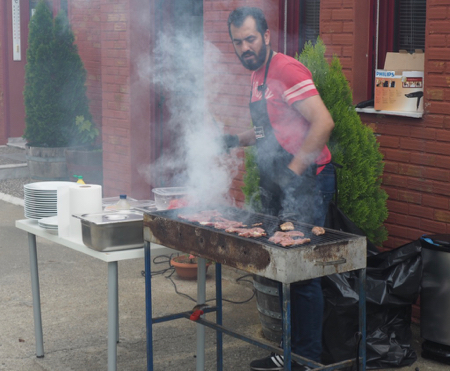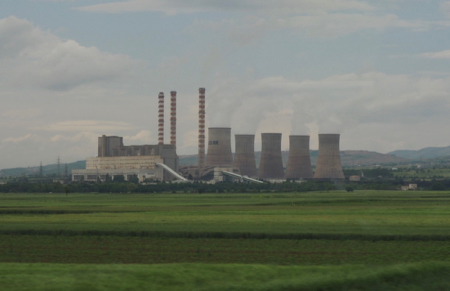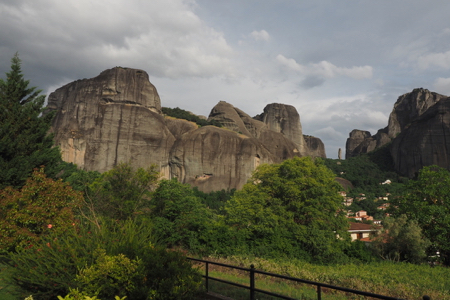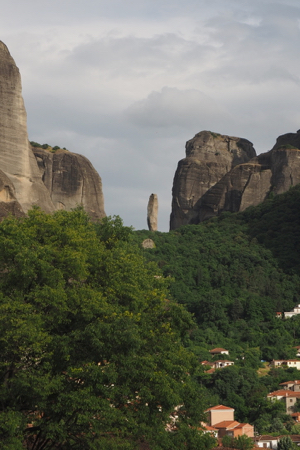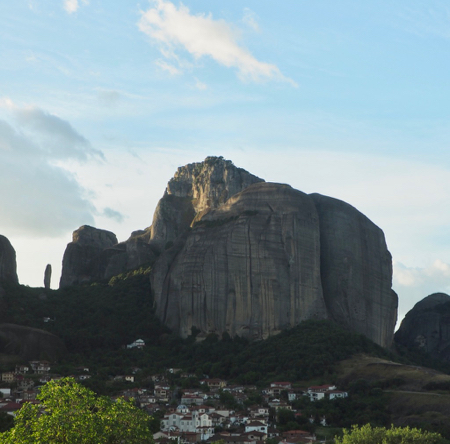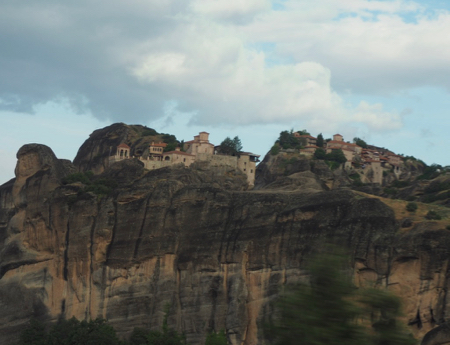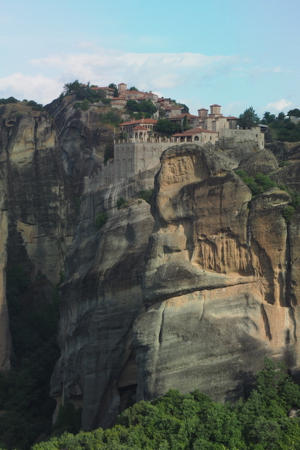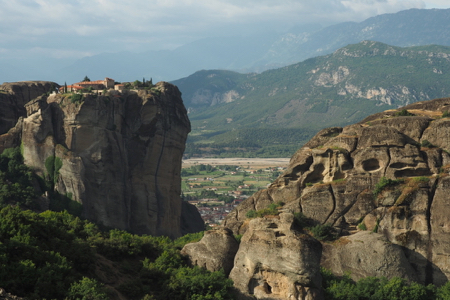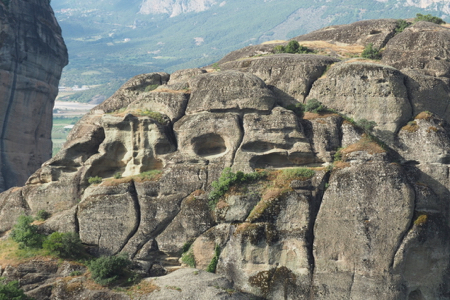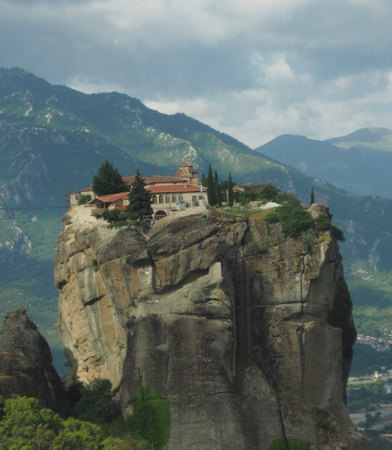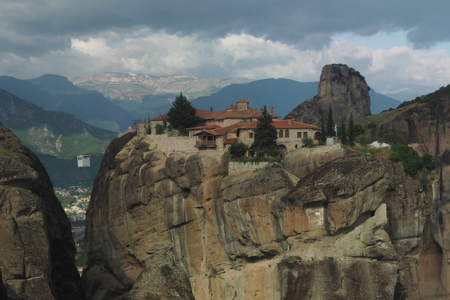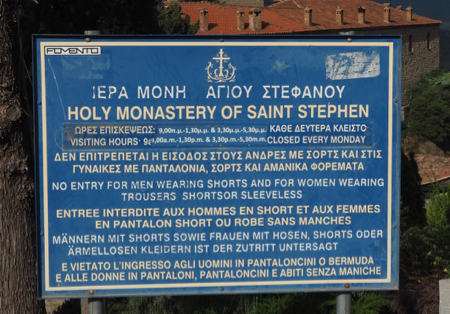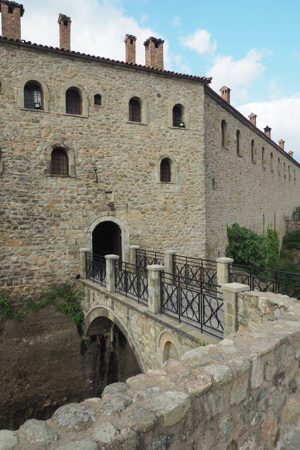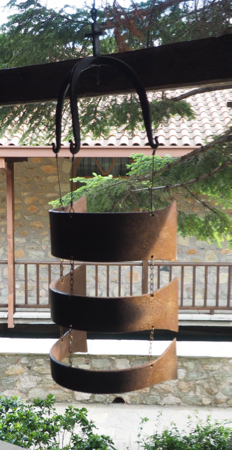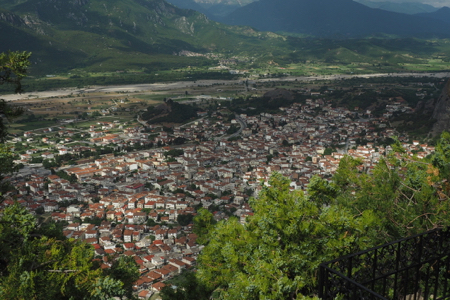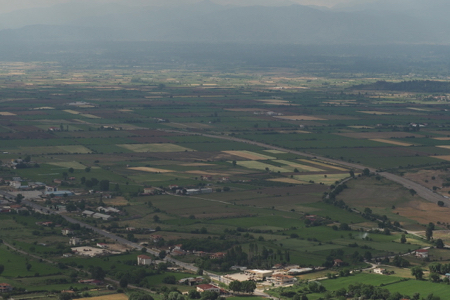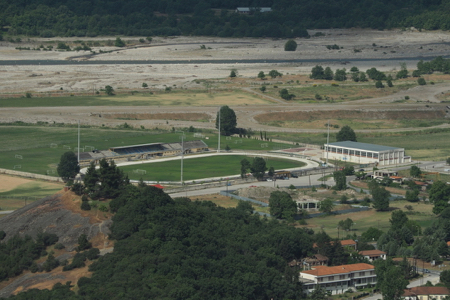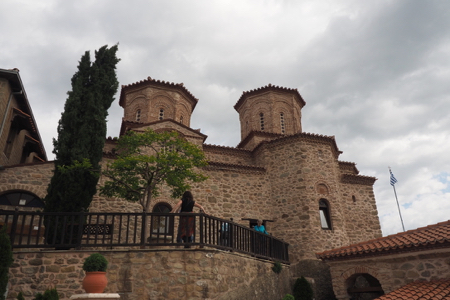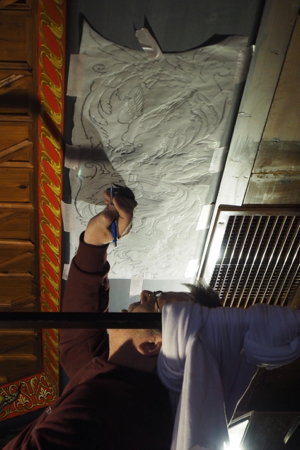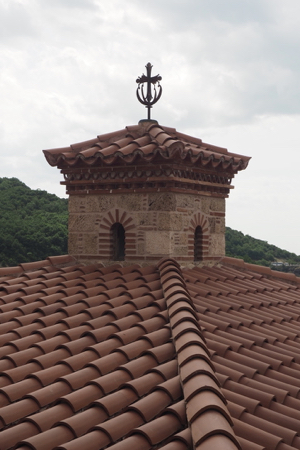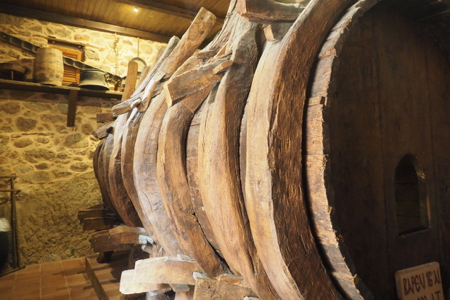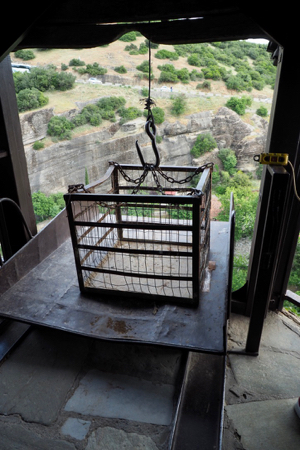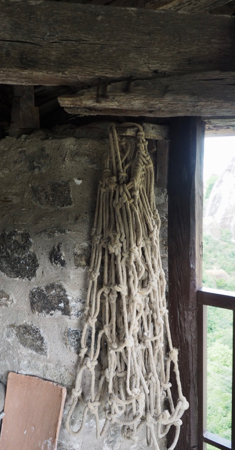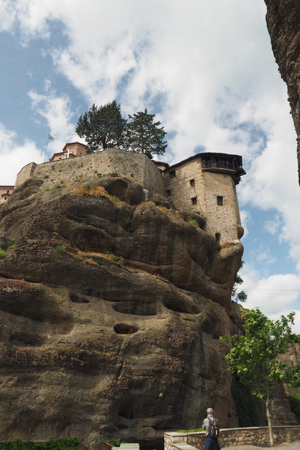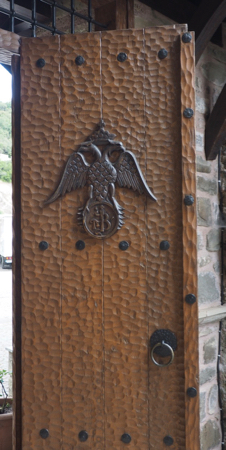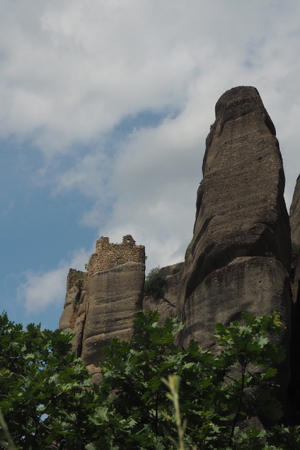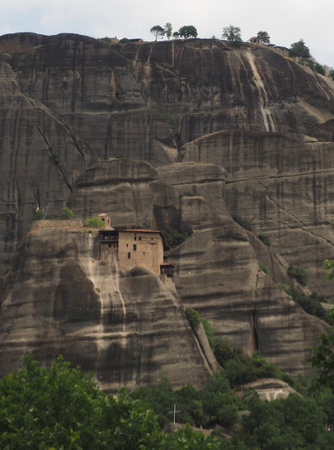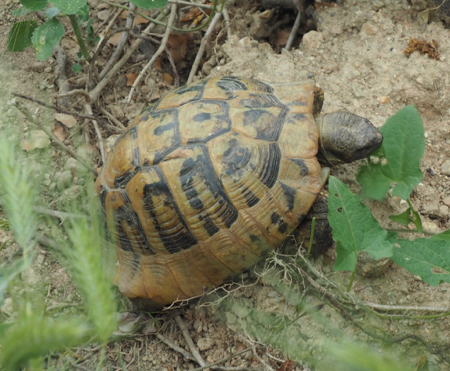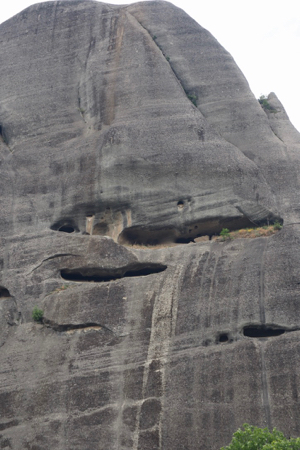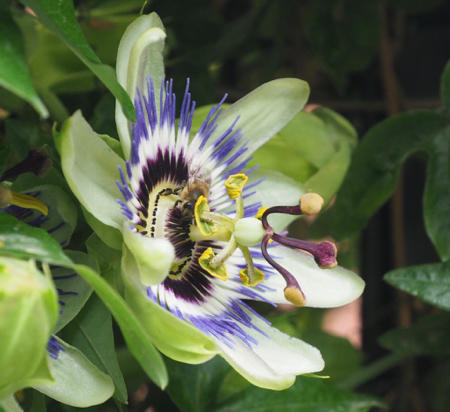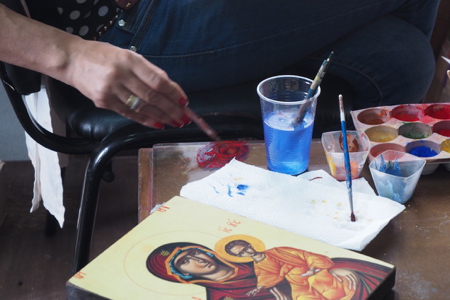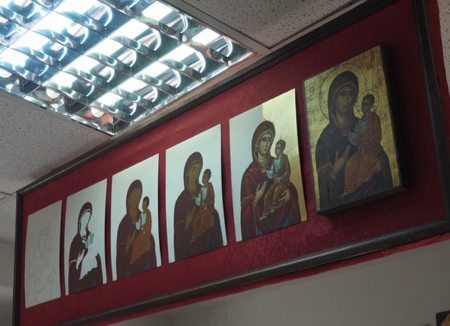Tues., 5/15/18 - Thessaloniki to Meteora
Our first stop this morning was at the very interesting and historic Royal Tombs of Vergina. One of the four tombs at the site is that of King Philip II of Macedonia, the father of Alexander the Great. In the 1970’s a Greek archaeologist excavated the mound of dirt that covered the four ancient tombs. Two had been robbed but those of Philip II and his grandson, Alexander IV, were intact. Alexander IV was the son of Alexander the Great and Roxanne, one of his seven wives. (Photos were not allowed in the tomb area.)
Lots of grain and rice are grown in the area
(Photos from the bus do not come out very well! But sometimes that is the only way to get the picture.)
Fields of poppies
Mound above the royal tombs. This was about all that could be photographed at this location. (This link contains photos of the tombs and their contents.)
After Vergina, we drove on to Yannikochori to the winery owned by the mayor of Thessaloniki and run by his two sons. We looked at the hillsides of vines (Sonoma and Merlot grapes), toured the winery, and tasted a white wine made from peaches and apricots and then a Sonoma red wine. The lunch that followed was made from local foods and was delicious.
Vineyards
Vineyards
Vineyards
Lunch being cooked
Wine tasting
Lignite fired power plant
Three more hours of driving through the beautiful countryside of orchards (cherries, peaches, apricots, pomegranates, and plums) and poppies brought us to our hotel in Meteora, the Doupiani. Closer to Meteora we saw smaller plots of tomatoes, artichokes, broccoli, and then large fields of wheat and alfalfa. This must be the Greek bread basket. Meteora is famous for 150 kinds of mushrooms. We are staying in Kastraki which has a mushroom museum.
We had about half an hour to settle into our rooms and then it was off to dinner in Kastraki. After dinner a local troupe performed traditional Greek dances, explained the male and female wedding dress, and then tried to get our group to dance the Zoroaster, a Greek dance.
Wed., 5/16/18 - Meteora
Our hotel in Kastraki is in a quaint boutique with a view of some of the rocks where the monasteries were built.On the way up to St. Stephen’s monastery (Agios Stefanos), we stopped once to walk out on the limestone rocks to take photos. There are about 300 rocks jutting up to the sky. Monks came in the 9th c. and lived as hermits in the caves that dot the shear walls. By the 13th c. monasteries were built on some of the peaks. There were 26 monasteries at one time (six are left), the highest was 1800 feet above sea level.
Meteora - view from our hotel room
Meteora - view from our hotel room
Meteora - view from our hotel room
Monasteries of Varlaam (left) and Great Meteron
Rousanou Monastery
Monastery of St. Nicholas Anapausas
Varlaam Monastery
Monastery, town, caves
This is our "we were there" photo
Monasteries of St. Nicholas Anapausas (left) and Rousanou
Monastery of the Holy Trinity
Monastery of the Holy Trinity (note the cable car access)
St. Stephen’s was originally for monks. It was the closest monastery to the town of Kalambaka and was bombed to ruins with the town by Nazis in WWII. The monks all left. The buildings were reopened in 1961 as a nunnery. There are now 32 nuns and two novices in residence. They, like the monks, work 8 hours a day, pray 8 hours (scattered during the day), and sleep 8 hours.
Our guide, Dina, took us into the chapel, after we wrapped skirts over our long pants, and explained the significance of the decorations. All of the wall paintings have been painted since 1961 by one man. They are copies of the originals.
St. Stephen's Monastery
Bridge over to St. Stephen's
"Bell" for calling the monks to prayers
Well
Looking down from St. Stephen's
Looking down from St. Stephen's
Looking down from St. Stephen's
Next we visited Varlaam, a monastery for monks. Ten monks live and work there now. It was built in the 14th c. We climbed 194 steps to get our wrap-around skirts and enter the chapel. The frescos here were painted 500 years ago by the monks. We walked through to see the device originally used to winch up supplies and monks in a cargo rope net. A visiting Brit told us that when she visited here in 1976 she came up in that net. There is now a hydraulic winch and metal bucket, but not for people.
Varlaam Monastery
Painting the ceiling in Varlaam Monastery
Varlaam Monastery
Varlaam Monastery
Water casks in Varlaam Monastery
Lift for bringing up supplies to Varlaam Monastery
Cargo net for supplies
Eleven of the 15 of us opted to “hike” down from Varlaam on the path once used by the monks. It was a descent through the woods with more views of the rocks and some monasteries. It was nice exercise.
Varlaam Monastery from below
Interesting door
Rocks
Wall of Varlaam Monastery from below
Monastery of St. Nicholas Anapausas
Monastery of St. Nicholas Anapausas
Local wildlife
Caves
Prayer flags and banners in a cave in the rocks
Passion fruit flower
Passion fruit flower
We stopped to see how icons are painted and then went to dinner at Xapama in Kastraki. More good starters, then grilled pork, French fries done in olive oil, and rice pilaf. Dessert was apple slices with cinnamon and yogurt with carrot spoon sweet. The owner of the restaurant was painting (refurbishing) the ceiling at Varlaam when we were there today and at the end of dinner tonight he and his son played guitar and balalaika for us. They were very, very good. What a talented man!
Process of icon painting
Icon painting
Process of icon painting
| Return to Top | Return to Itinerary | Return to Trips page to view other trips | Return to Dreamcatcher Home Page |
